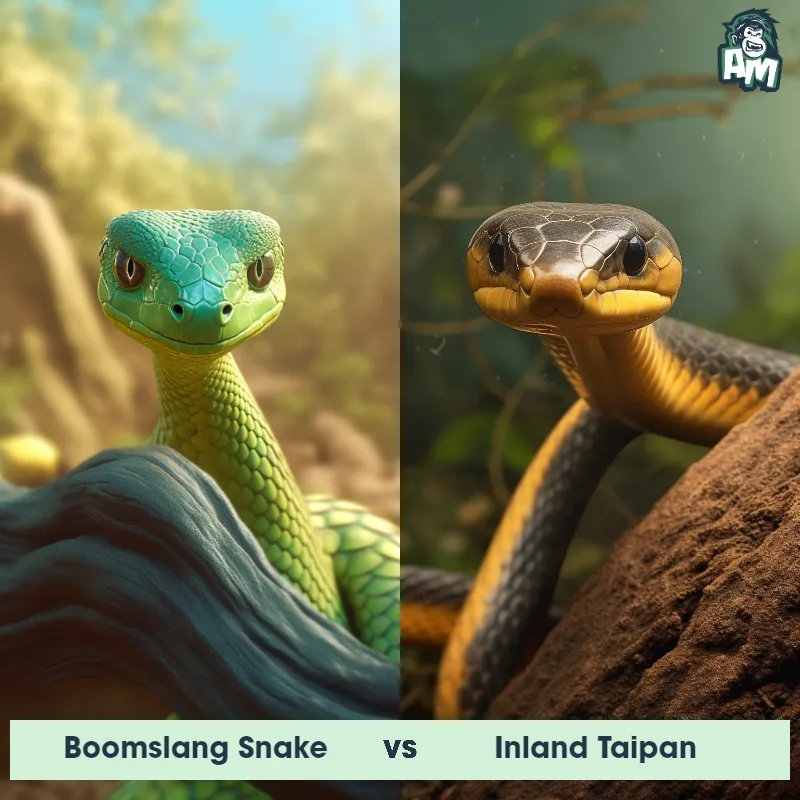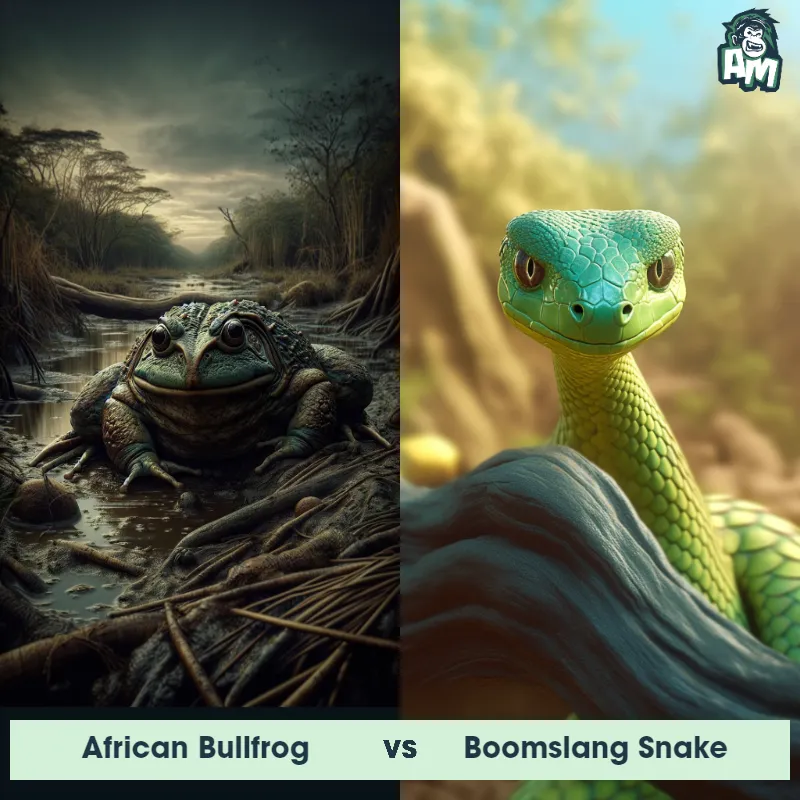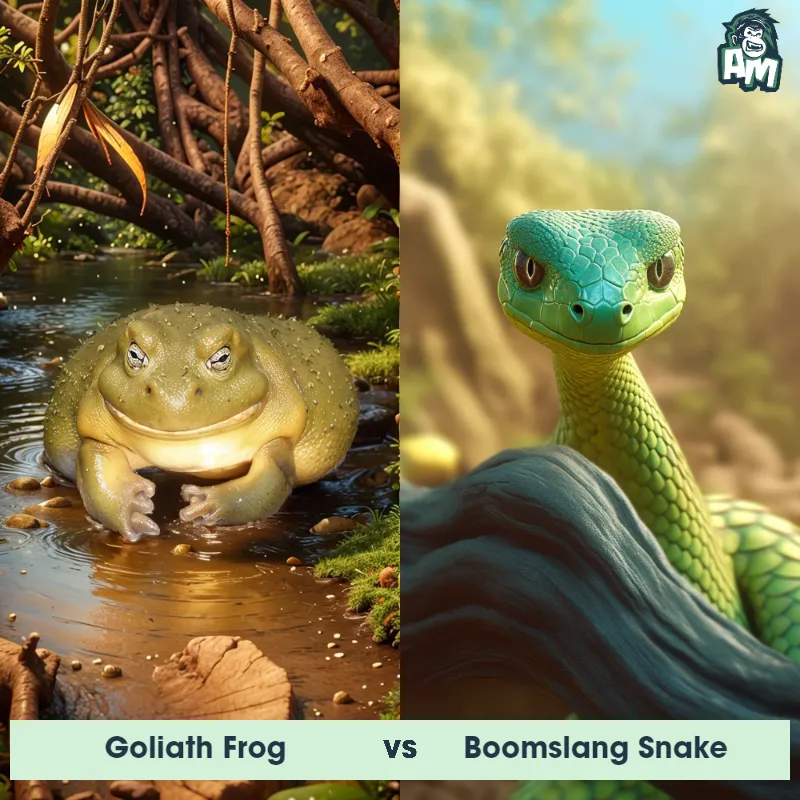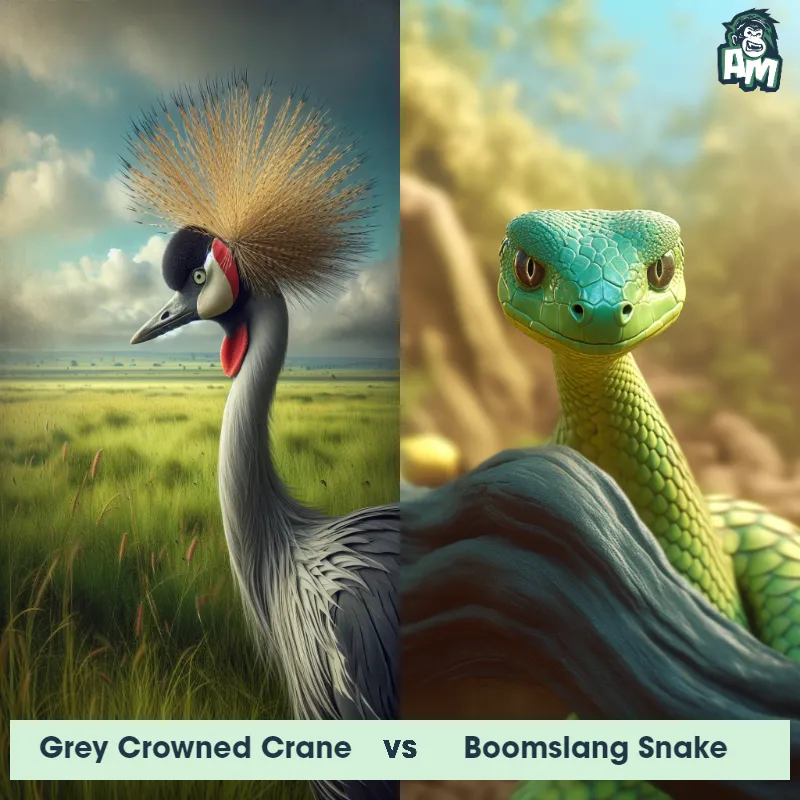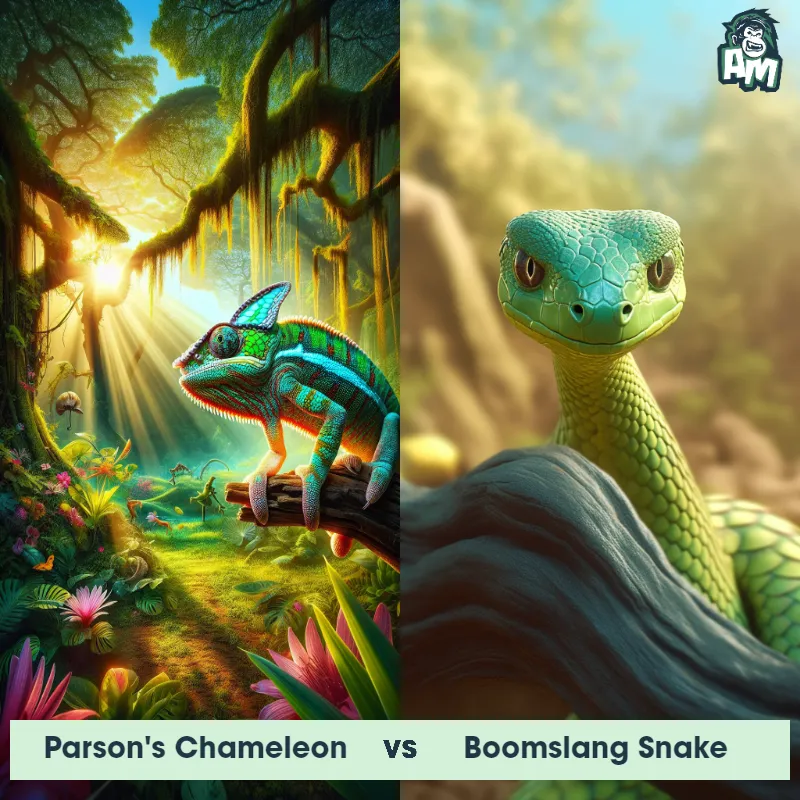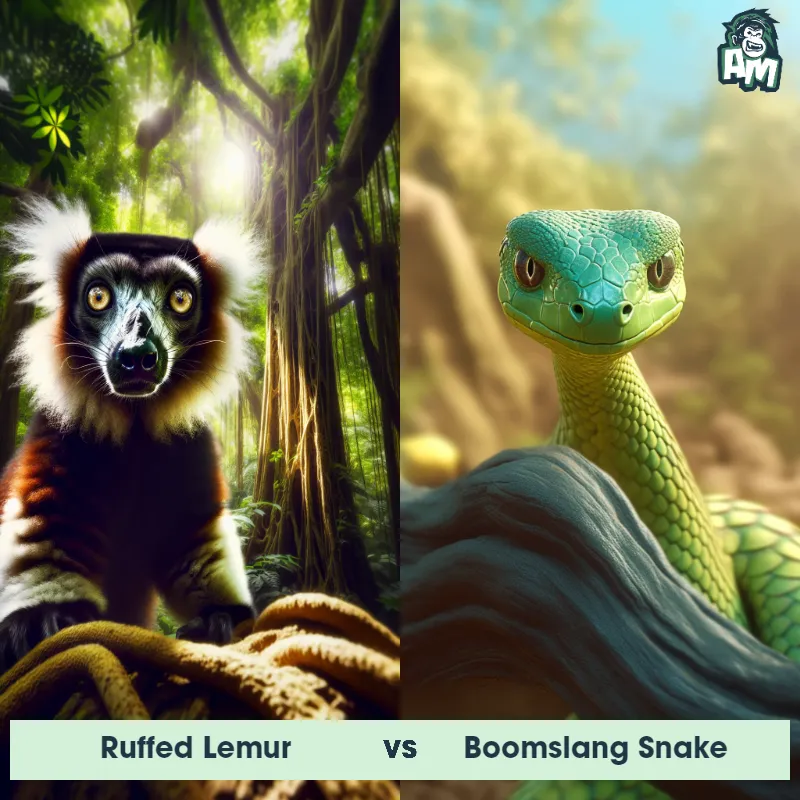The Boomslang Snake
The Boomslang Snake, scientifically known as Dispholidus typus, is a highly venomous snake native to Africa. With its slender body and long tail, it can reach lengths of up to 6 feet. It has large eyes and distinctively pointed snout, enabling it to accurately strike at its prey from branches or the ground. The snake is known for its striking coloration, with males usually being bright green and females being a duller shade of green or brown. Despite its venomous nature, the Boomslang Snake is rather shy and avoids human contact whenever possible.
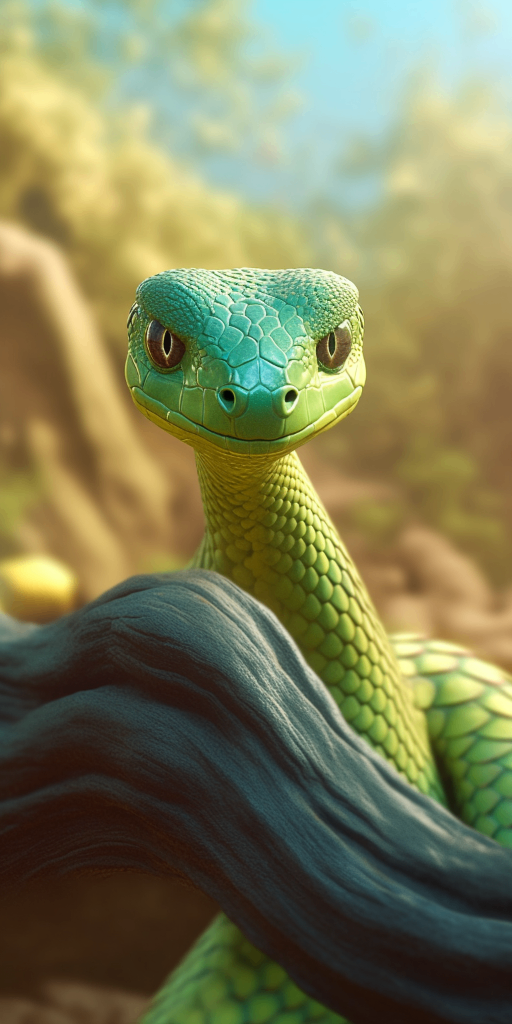
| Boomslang Snake | |
|---|---|
| Size | Up to 6 feet (1.8 meters) |
| Weight | Up to 2.2 pounds (1 kilogram) |
| Speed | Speed: 4 mph (6.4 km/hr) |
| Key Strength | Venomous bite |
| Biggest Weakness | Vulnerable to larger predators |
| Scientific Name | Dispholidus typus |
| Family | Colubridae |
| Habitat | Trees and shrubs |
| Geography | Sub-Saharan Africa |
| Diet | Birds, eggs, lizards, and small mammals |
| Lifespan | 8 years - 12 years |

The Boomslang Snake
The Boomslang Snake, scientifically known as Dispholidus typus, is a highly venomous snake native to Africa. With its slender body and long tail, it can reach lengths of up to 6 feet. It has large eyes and distinctively pointed snout, enabling it to accurately strike at its prey from branches or the ground. The snake is known for its striking coloration, with males usually being bright green and females being a duller shade of green or brown. Despite its venomous nature, the Boomslang Snake is rather shy and avoids human contact whenever possible.
Fun Fact: One fascinating fact about the Boomslang Snake is that it possesses a venom considered to be the most potent among all African snakes, making it one of the deadliest.
| Boomslang Snake | |
|---|---|
| Size | Up to 6 feet (1.8 meters) |
| Weight | Up to 2.2 pounds (1 kilogram) |
| Speed | Speed: 4 mph (6.4 km/hr) |
| Key Strength | Venomous bite |
| Biggest Weakness | Vulnerable to larger predators |
| Scientific Name | Dispholidus typus |
| Family | Colubridae |
| Habitat | Trees and shrubs |
| Geography | Sub-Saharan Africa |
| Diet | Birds, eggs, lizards, and small mammals |
| Lifespan | 8 years - 12 years |
Boomslang Snake Matchups
We use AI to simulate matchups between the Boomslang Snake and other animals. Our simulation considers size, strength, and natural predatory behaviors to determine the most likely outcome.
Boomslang Snake: Diet, Predators, Aggression, and Defensive Behaviors
What do Boomslang Snakes eat?
Boomslang snakes primarily feed on small mammals, birds, and occasionally other reptiles. They are known for their exceptional hunting skills, using stealth and their powerful venom to capture their prey.
Do Boomslang Snakes have any predators?
While Boomslang snakes are highly venomous and can pose a threat to other animals, they do have predators in the wild. Birds of prey, such as eagles, are known to prey on Boomslang snakes. Additionally, larger snakes like cobras and king cobras have been known to feed on Boomslangs.
Are Boomslang Snakes aggressive?
Boomslang snakes are typically shy and avoid confrontation with humans or other animals. They are not inherently aggressive, but they will defend themselves if they feel threatened or cornered.
Do Boomslang Snakes fight with other animals?
Boomslang snakes are more focused on hunting for food rather than engaging in fights with other animals. However, if they feel threatened, they may strike with their venomous bite as a form of defense.
How do Boomslang Snakes defend themselves?
Boomslang snakes have several defense mechanisms to protect themselves from predators. They rely on their excellent camouflage to blend into their surroundings and avoid detection. If threatened, they will puff up their bodies to appear larger and intimidate potential threats. They will also strike rapidly and accurately with their venomous bite if necessary.
What is the biggest weakness of Boomslang Snakes in a fight?
Despite their potent venom, Boomslang snakes have a limited defense when it comes to physical confrontations. Their slender bodies and lack of strength make them vulnerable to larger predators or aggressive animals that may overpower them in a fight. Once engaged in a physical struggle, Boomslang snakes may struggle to fend off their opponents effectively.
Fun Fact: Interestingly, the Boomslang Snake is rear-fanged, which means its venom is delivered by biting and holding on to its prey rather than the usual injection through hollow fangs. This method allows it to feed on small birds and eggs, which form a significant part of its diet.
Fun Fact: Unlike many other snake species, the Boomslang Snake's venom does not primarily affect the nervous system. Instead, its venom disrupts the normal clotting process, causing excessive bleeding in the victim. This unique venom composition makes its bite particularly dangerous and requires prompt medical attention.



